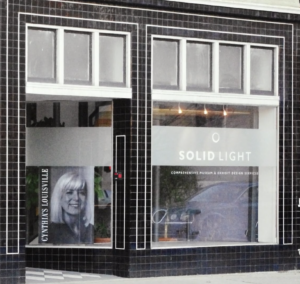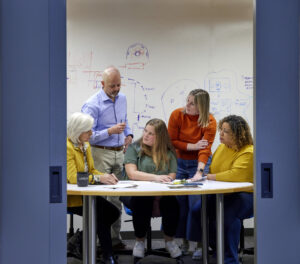Architect, Christopher Quirk
Architects see things from a code perspective, a life safety perspective, and we think about all the pieces like engineering—structural, mechanical, electrical and plumbing that can affect design.
Solid Light, as a company, designs in 3-D. We’re not really tied to a grid, we’re not tied to a structural system, and our designers have these super creative ideas. As an architect, I work with the designers and fabrication department on how to bring these wild ideas to fruition in a cost-effective, code-compliant, responsible, yet exciting, way.
Our Executive Creative Director is all about the impossible and “why don’t we do this.” He jokingly calls me Dr. No because I will point out why we can’t do something: “Oh, there are building codes and life safety. There’s gravity.” [laughs] So balancing creativity with life safety here has been a challenge for me—a fun challenge.
With existing structures, it’s really in a client’s best interest for us to study architectural drawings and understand the implications of things that can’t be moved quickly or inexpensively. If we know that information early on, we can integrate it into the design which saves money and headaches down the road. We want to figure out everything on the front end, then prioritize, so we can do a seamless delivery and get the experience open for the client.
With the experiences we create from the ground up, the experience design informs the architectural design and vice versa, back and forth. You have a much more integrated product in the end, as opposed to fitting an experience design into an existing envelope.
Christopher’s Advice:
I would encourage you to integrate your project’s architectural design with its experience design and let them play off one another, as opposed to forcing one upon the other. Also, having both services under one roof, as we do, really streamlines the process and defines all the responsibilities. I’m in creative and contractor meetings on the same project. I can make sure we’re covering all the issues so the building and experience designs work hand in hand.
Christopher Quirk has worked at Solid Light since August of 2017, after a historic preservation career of “fitting new things into old buildings.” When he’s not addressing architectural issues on projects, you might him find him renovating his 200-year-old house or in the kitchen cooking for friends.




